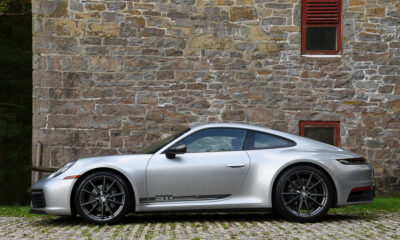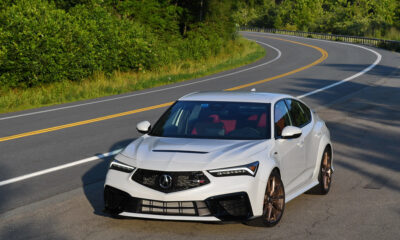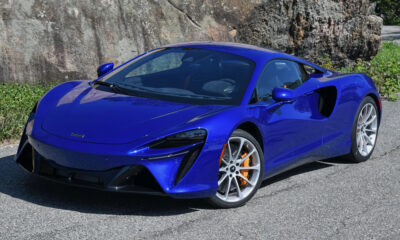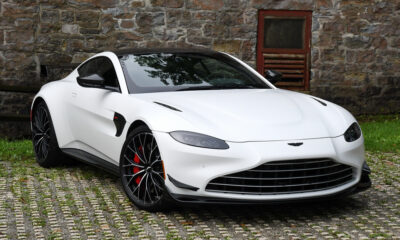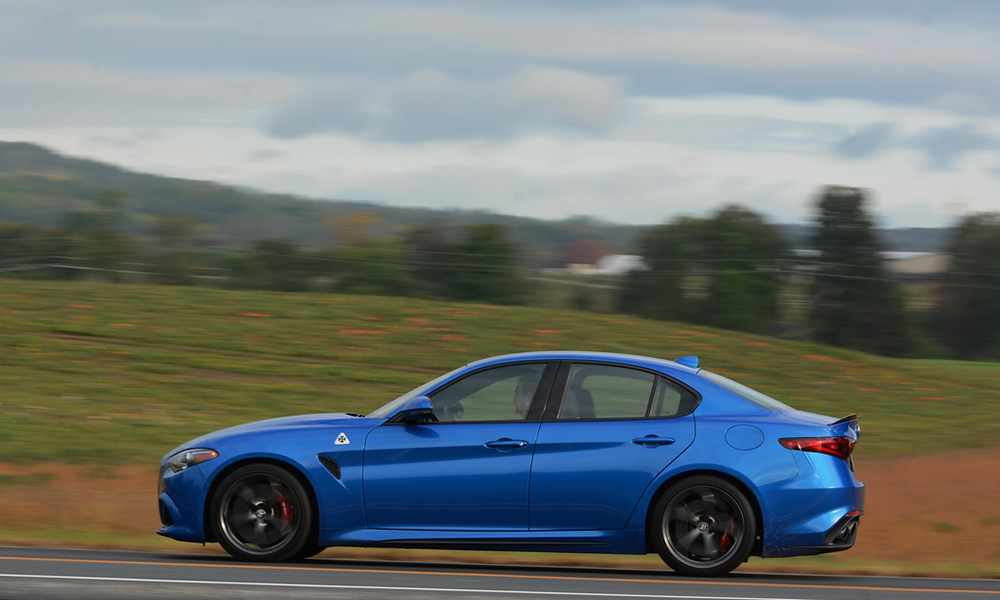
Photo: David Haueter
We’re living in strange automotive times. The industry is making a big push toward fully electric cars as there’s more concern than ever with emissions and global warming, but there are also more 400+ horsepower cars available than ever before and plenty that top 500 horsepower.
The automotive arms race is great for us enthusiasts, but I would argue that the market for high-performance sport sedans and coupes has become very homogenized.
As good as they are, many cars have comparable engines, brakes and suspension setups with similar electronic systems running everything, which often makes them hard to tell apart from behind the wheel.
There are some notable exceptions of course, like the Alfa Romeo Giulia Quadrifoglio.
For many Americans, hearing the name Alfa Romeo conjures up images of the Spider Veloce roadster that was sold here in the mid-1990s.
Alfa Romeo has been working hard trying to change that with the Giulia sedan, Stelvio SUV and the 4C roadster.
It hasn’t been an easy road. Alfa Romeo’s sales in 2018 were almost twice what they were in 2017 but they still sold under 24,000 units in the U.S., which is far under what they were predicting they would move when they decided to start selling cars in the U.S. again.
It isn’t easy to come back in to a market you’ve been out of for a quarter-century and compete against the likes of Mercedes and BMW, not to mention Lexus and Infiniti.
The well-documented reliability issues with the Giulia in the major car magazines didn’t help either, nor did the lack of a widespread dealer network.
All those things aside, the Giulia Quadrifoglio delivers a spot-on driving experience that is dynamically superior to its rivals.
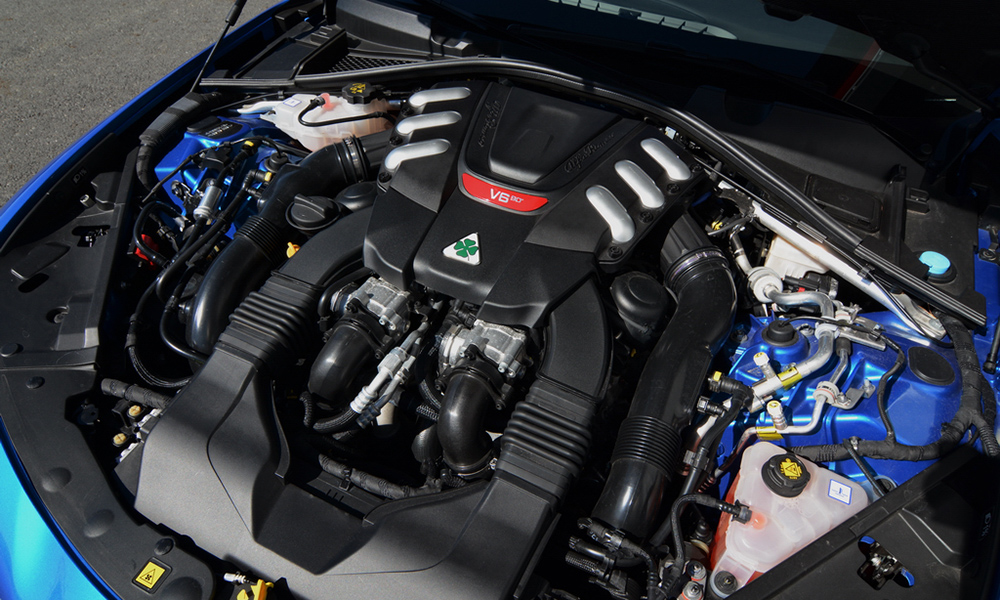
Photo: David Haueter
Powered by an all-aluminum 2.9-liter twin-turbocharged V6, which is essentially the Ferrari California T’s V8 with two-cylinders dropped, the Giulia generates an impressive 505hp and 443lb-ft. of torque and can get from 0-60 in 3.8 seconds on the way to a top speed of 191mph.
Those are impressive numbers for sure, but the Giulia’s rivals put up big numbers as well.
What sets the Giulia Quadrifoglio apart from its rivals are the intangibles.
Unlike other cars in this segment that can feel a bit numb and disconnected from the road, the Alfa feels alert and alive and gives the driver great communication through the seat and the steering wheel.
It feels fantastic on a twisty road and it carries that competence over to the track as well with great balance, minimal body roll and quick steering responses.
The attitude of the car is determined by Alfa’s “DNA Pro Drive Mode” selector, which gives options for Race, Dynamic, Natural, or Advanced Efficiency. Like other similar systems, it changes suspension and throttle response modes from passive to aggressive while also loosening up the traction control.
The Quadrifoglio is the only Giulia that has a race mode choice in the DNA selector, and it turns the Giulia from a really nice sports sedan into a great one on the track. You can usually tell within half a lap if a car is going to be good on the track, and at Monticello Motor Club the Giulia felt like it was made for lapping road course circuits.
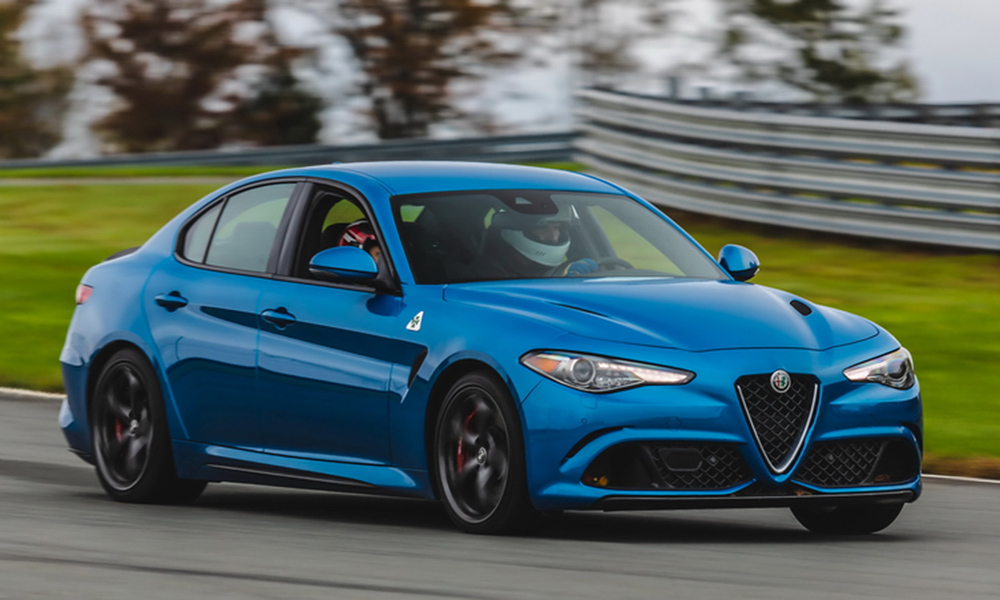
Photo: David Haueter
In short, it didn’t feel like a four door sedan – it felt like a sports car, and it was more competent on the track than the BMW M3 Competition Package I had driven here earlier in the season.
One of the minor issues on the road was that the carbon ceramic brakes (an $8,000 option) are a bit hard to modulate, but they felt great on the track and never faded as the day went on.
The 8-speed automatic transmission felt just a touch lazier than the dual-clutch transmission in the M3 or even the similar automatic in the BMW M5, but it wasn’t bothersome. The seats are supportive and comfortable and there’s grippy alcantara on the seats.
I also like that the Giulia has the shift paddles fixed on the steering column, rather than moving with the steering wheel.
As far as the Giulia’s infamous reliability issues, I didn’t have any issues with the car I drove, which I had for a week and drove to over 1,100 miles, which included flogging it on the track for an entire day and taking it on an eight-hour round trip.
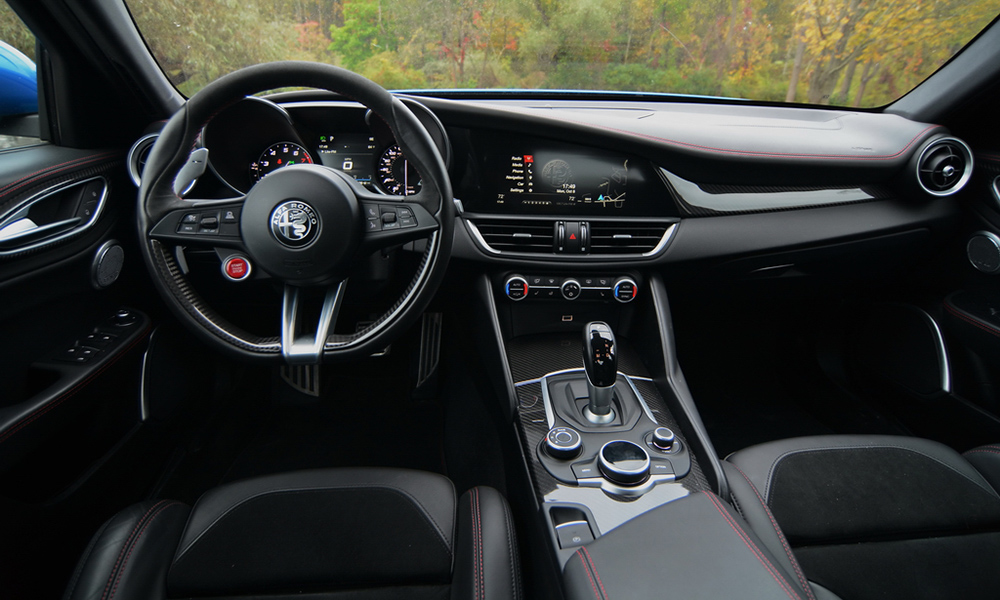
Photo: David Haueter
However, there were a few worrisome hints of issues that may spring up in the future. The driver’s window was making some noises when lowered and the driver’s seat was lurching a little when moving it back.
Those may not mean anything, but I’d be asking about it at the dealer if I owned this car. It’s not a reliability issue, but the infotainment and navigation display also seemed like they were around two generations older than some competitive systems.
The Giulia also looks great, with its unique front grill and offset quad exhaust. Our test car also had the carbon fiber package ($1,100) that makes the car look even racier, with its front splitter, rear spoiler and side skirts.
At a base price of $73,995, the Giulia Quadrifoglio is around $7,500 more than a BMW M3 and about the same price as the 503hp Mercedes AMG C 63 S.
Those other cars may be more of a safe bet, especially if you plan on keeping the car a long time, but if it came down to choosing with my heart instead of my head, it would be tough for me to not choose the Alfa Romeo over those other two. It has soul.
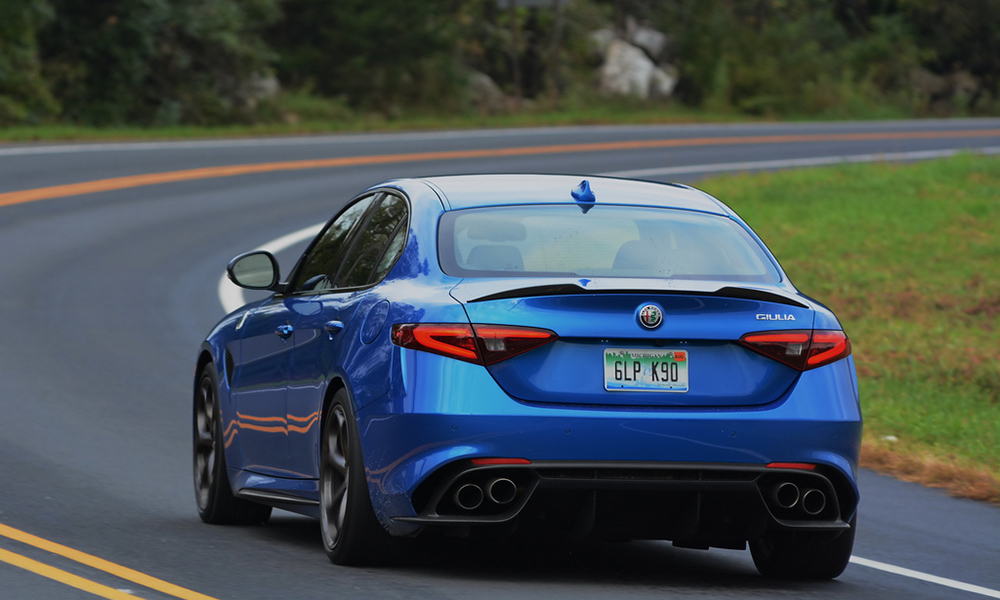
Photo: David Haueter


















